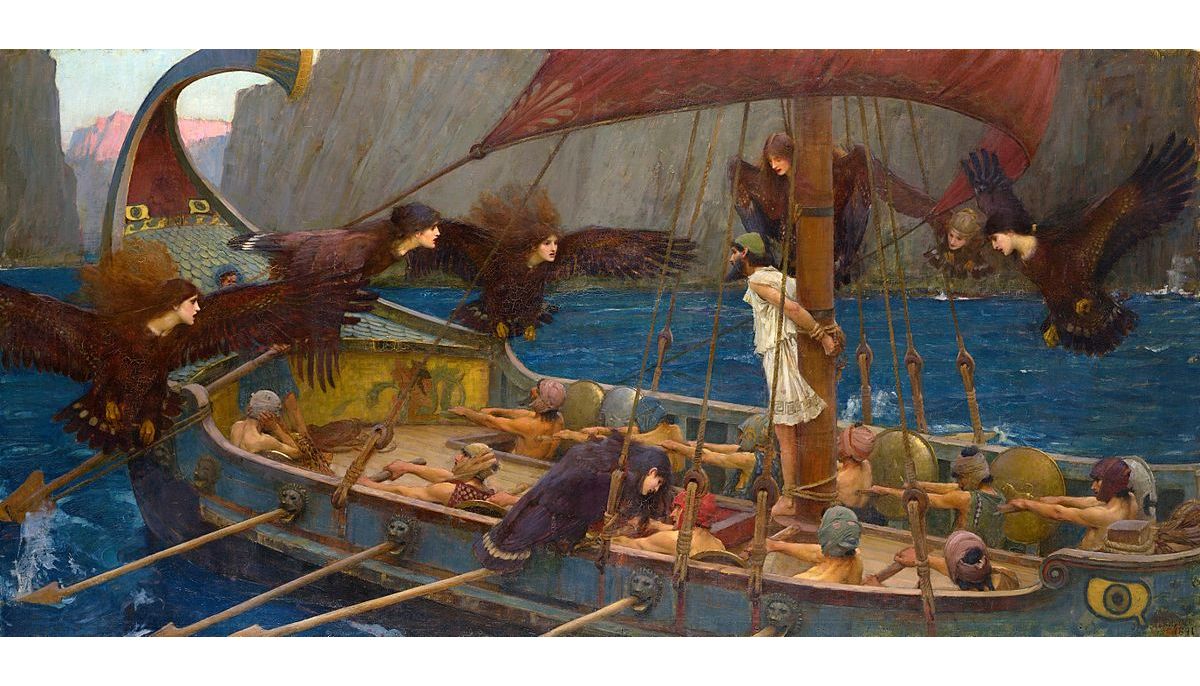Have you ever found yourself muddled when differentiating between mermaids and sirens? You’re in good company.
While they share some intriguing similarities, they are distinctly different creatures. In this article, we’re going on a mythological deep dive to clear up the confusion.
First, we’ll trace back the ancient origins of these captivating beings. Then, we’ll put them side by side to reveal what they have in common.
Finally, we’ll unveil their unique features, making it crystal clear why these two should never be mixed up.
Trust us: by the end, you’ll be the go-to expert at any fantasy-themed trivia night!
What are Sirens?

In Greek mythology, sirens were powerful and dangerous creatures often depicted as part bird, part woman.
Their alluring singing voices were said to mesmerize sailors and lead them to their doom, causing ships to crash upon the rocks and leaving the sailors at the mercy of the sirens’ hunger.
Sirens were known for their beauty and seductive powers but were also feared for their deadly nature. Their image has evolved, and they have been portrayed differently in various cultures.
Sirens in Greek mythology
In Greek mythology, sirens were believed to be the daughters of the river god Achelous and the muse Melpomene. They were initially depicted as bird-women hybrids, with the head, arms, and torso of a woman and the wings, talons, and feet of a bird.
Later depictions showed them as mermaid-like creatures with a woman’s upper body and a fish’s lower body.
Sirens in Homer’s The Odyssey

The most famous story involving the sirens is that of Odysseus, who encountered them on his long journey home from the Trojan War. In Homer’s epic poem “The Odyssey,” the sirens were described as singing a beautiful song that no sailor could resist.
Odysseus, aware of their deadly powers, ordered his men to plug their ears with wax and tie him to the mast so that he could hear their song without being lured to his death.
Unable to claim any victims, the sirens eventually gave up and returned to their rocky island.
Are Sirens evil?
Sirens were often portrayed as evil creatures whose sole purpose was to lure sailors to their deaths. Their seductive songs were considered a form of temptation, and their alluring beauty was seen as a trap to ensnare unwary travelers.
However, as with many mythical creatures, the depiction of sirens as wholly evil beings has varied over time and across cultures.
In some interpretations, sirens were not intentionally malicious but were instead cursed or doomed to a life of loneliness and isolation. In other stories, they were portrayed as benevolent beings who helped sailors by warning them of impending danger.
In modern times, sirens have been portrayed in various ways, often deviating from their original malevolent characterization.
They are often depicted in popular culture as seductive and alluring but not necessarily evil.
In some works of fiction, they are even portrayed as sympathetic or tragic characters, misunderstood by humans and yearning for love and companionship.
What are Mermaids?

Mermaids, like sirens, are mythical creatures that have captivated the imagination for centuries. They are often depicted as having the upper body of a woman and the tail of a fish and are associated with the sea and water.
The origins of mermaids can be traced back to ancient Assyrian and Babylonian mythology, where they were portrayed as goddesses of the sea.
Modern Mermaids
In popular culture, mermaids have been portrayed in various ways, from playful and curious to dark and dangerous.
In many stories, mermaids are portrayed as curious beings who long to explore the world beyond the sea and sometimes fall in love with humans.
The image of the mermaid has also been associated with femininity, beauty, and freedom. The idea of the mermaid as a symbol of female power and independence has been explored in various ways in literature, art, and feminist discourse.
Mermaids in Greek mythology

In Greek mythology, mermaids were known as Nereids and were believed to be the daughters of the sea-god Nereus and the Oceanid Doris. They were depicted as beautiful and benevolent creatures living in the sea’s depths.
The Nereids were often depicted as companions of Poseidon, the god of the sea, and were said to be able to calm the waves and control sea creatures. They were also associated with music and dance and were often portrayed playing musical instruments or dancing in celebration.
Notable Nereids
One of the most famous Nereids was Thetis, the mother of Achilles, who played an essential role in the Trojan War. Another notable Nereid was Amphitrite, who was the wife of Poseidon and the goddess of the sea.
Mermaids also played a role in several Greek myths. In the story of Jason and the Argonauts, the Nereid Thetis helped the heroes on their quest to find the Golden Fleece.
In the story of Perseus and Andromeda, the Nereids helped to save Andromeda from the sea monster that threatened to devour her.
Are Mermaids evil?
Mermaids are generally not depicted as vicious or evil creatures. They are often portrayed as benevolent beings who are curious about humans and sometimes even help them.
That being said, there are some stories and legends in which mermaids are portrayed as dangerous or evil.
In some cultures, they are believed to be omens of disaster or associated with drowning or shipwrecks. In these stories, mermaids are often portrayed as luring sailors to their deaths, much like sirens.
However, these depictions of mermaids as malevolent beings are less common than their more benevolent portrayals.
Are Sirens and mermaids the same?

Although mermaids and sirens share similarities, such as their association with the sea and physical appearance, they are not the same mythical creatures.
Despite this, the terms ‘mermaid‘ and ‘siren‘ are often used interchangeably, causing confusion between the two creatures.
It is important to note that while there are some overlapping features, mermaids and sirens have distinct differences in their origins, portrayal, and appearance.
Similarities between Sirens and Mermaids
Mermaids and sirens have several key similarities:
- Physical Appearance: Both are commonly depicted as human-animal hybrids.
- Sea Association: Both creatures are intrinsically linked to the ocean, symbolizing its dangers and mysteries.
- Allure and Enchantment: Mermaids and sirens are known for their captivating beauty and ability to seduce men.
- Mythological Roots: Each has a long history in human mythology and folklore, appearing in diverse cultures and periods.
Differences between Sirens and Mermaids

Mermaids and sirens differ in several important ways:
- Origins: Sirens originate from Greek mythology, whereas mermaids have a broader presence in global folklore.
- Physical Features: Sirens often have bird-like characteristics such as wings or feathers. Mermaids are typically shown with fish-like scales and fins.
- Motivations: Sirens are generally portrayed as malevolent beings that lure sailors to their deaths. Mermaids don’t always have this dark intent.
Despite their surface-level similarities, these differences underscore why mermaids and sirens shouldn’t be confused.
So there you have it! While mermaids and sirens may seem like two sides of the same mythical coin, they’re actually as different as fish and feathers.
Sirens hail from the annals of Greek mythology, with a resume that includes luring sailors to a watery grave.
Conversely, mermaids are your friendly, global folklore celebs often seen as curious and kind-hearted.
Now you’re all set to impress at your next gathering with your deep-sea knowledge of these fantastical beings. Remember, they’re more than just fish tales and feathered fables!






